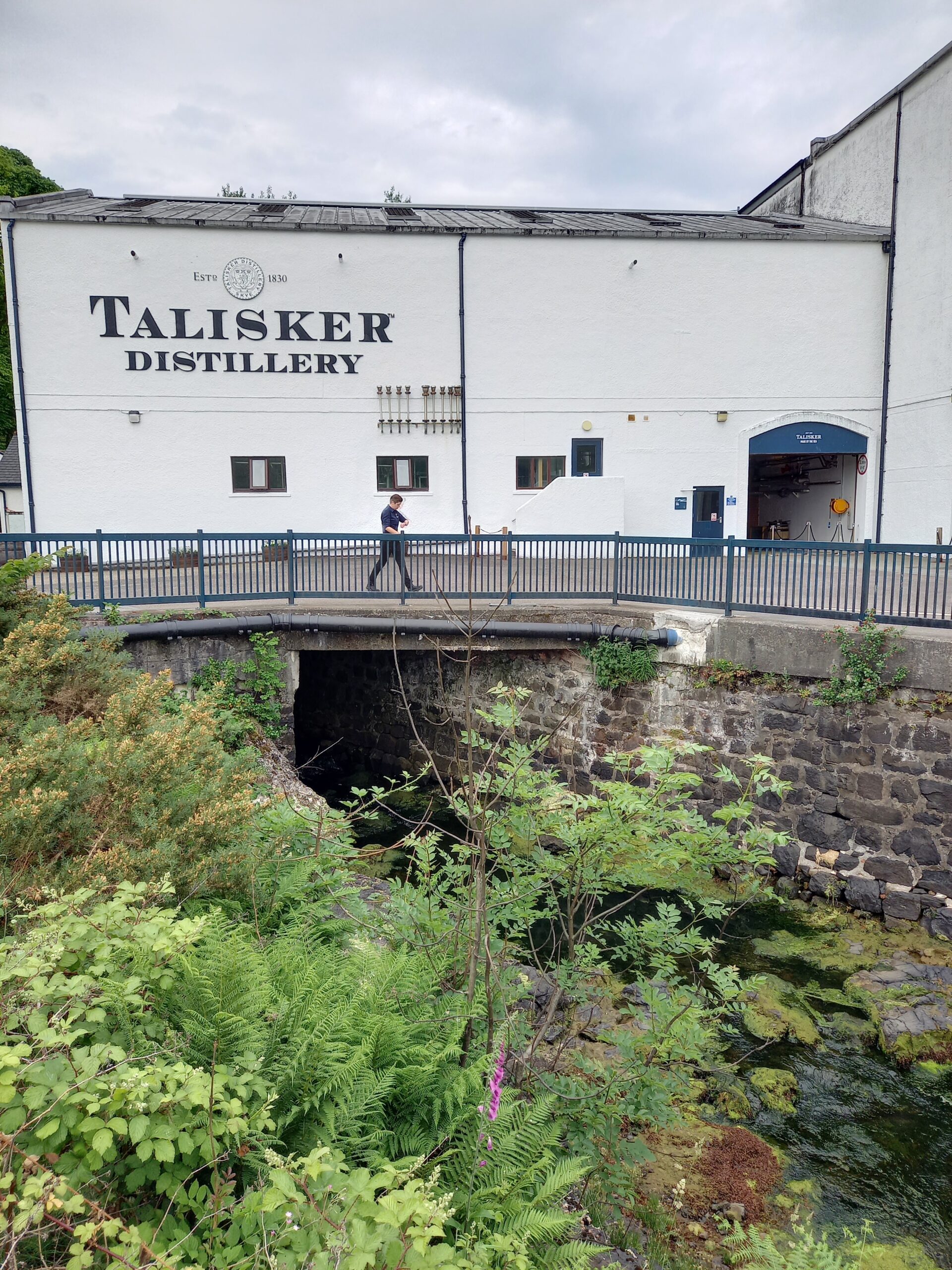
THE TERROIR DEBATE AND SINGLE MALT WHISKY…LOOKING FOR TERROIR IN A BOTTLE OF SCOTCH
I recently came across a couple of articles published back in 2021 in the magazine Club Oenologique. In the first, Andrew Jefford questions the possible application of the wine term ‘terroir’ to the universe of scotch whisky, and concludes that terroir, as “the wine-community” uses the term, does not and cannot apply to single malt whisky production. The second article is a strongly-worded riposte from Mark Reynier, fine-wine merchant turned distiller, who not only disagrees with Jefford, but states he has firm proof to the contrary.
Wine people get very worked up about terroir. Many love the concept, while some believe it the last refuge of scoundrels and other marketers of second-rate French wine. And when we turn our attention to spirits, we bring our viewpoint with us. In short, we look at the world of whisky through a wine glass. Which is why I – like many others – find the idea of searching for terroir in whisky so exciting. Mr Jefford himself admits to dedicating 15 good years of his life to this search, before reluctantly concluding that this particular El Dorado does not exist. But intriguingly, he leaves a trail of gold in the last paragraphs of his article, with a beautifully evocative description of the home of Caol Ila whisky, and the power of the dram to take you there, no matter where you are when you drink it. That, to me, is what terroir should be about : a sense of place, an origin story, an identity with inbuilt geo-localisation.
TERROIR IN WINE
When talking wine, I note the appropriation of the term ‘terroir’ on at least 4 levels. At a macro level, there is the notion of the ‘terroir character’ of an entire producing region, such as Bordeaux. Powerful but often austere and reserved, warm and cool at the same time, the wines of Bordeaux reflect both the climate and the people of the region. The wines of the Southern Rhone, by comparison, can be said to be heartier and more generous. Zoom in somewhat and we hear talk of the terroir character of individual villages. Pauillac differentiates from St Estephe 10km away by the particularity of its strong cedarwood and pencil lead character, as well as a naturally more polished, “aristocratic” tannin texture. Zoom even further and ‘terroir’ is used to describe the singularity of an individual estate. Chateau Lafite Rothschild expresses the unique character of its own land, rather than just telling a Pauillac story (which is just as well, since some of its land is actually in St Estephe anyway). And on the most micro-level, terroiristes claim to identify the defining character of a specific individual vineyard, as opposed to another just 100m away. This is at the heart of the Burgundian classification system, with its 1453 climats (defined vineyard sites) protected by law and lauded by UNESCO world heritage status.
In the individual vineyard case, the difference in character must be down to variations in soils and hyper-localised climatic influences of topography and exposition, because there is minimal or zero difference in human practice. Indeed, a cellar tasting with a grower such as Robert Chevillon in Nuits St Georges allows you to experience the genuinely different character of 8 separate 1er Cru Nuits vineyards, all made essentially the same way by the same person. On the wider levels (village and region), however, the differences in soils and localised climatic environment provoke different choices of human action, from the selection of grape variety (including clone, rootstock etc) to the practices of viticulture and vinification. Choices that worked best were sooner or later adopted by neighbours, until a tradition or ‘culture’ emerged for each village or region. The shared character of the wines reflects these shared traditions and culture, just as much as it reflects shared physical environmental influences.
The individual estate character is the hardest to categorise. It is clearly defined by the human choices of the people who work there, but those choices are influenced by the particularities of the estate : its location, logistics, the demands of its customer-base etc. Over time a character emerges that takes on a life of its own, and comes to be associated with the place as much as the people. A first growth Bordeaux can choose to incorporate a new vineyard at the other end of the appellation and still make a wine with its unique estate imprint, and we still use the word terroir.
Andrew Jefford argues that the “wine community” uses terroir to indicate the particular influence of physical environment rather than human action : “place before work” to use his words. His example is Chablis, whose terroir character is explainable “not because it is made from Chardonnay or cool-fermented in steel on fine lees with malolactic, but because it grows on slopes of Kimmeridgian limestone at 47.815°N in a semi-continental location in the Seine basin, and may have been fermented with indigenous yeasts”. I am not 100% convinced. Vineyards in Saint-Bris-le-Vineux, on kimmeridgian limestone, with the same climate, at the same latitude (well, same as Préhy, which is a Chablis village) make a noticeably different wine, because the growers at some stage chose not to use Chardonnay. It is also worth noting that many Chablis lovers dismiss examples that are vinified in new wood rather than neutral vessels, because they do not taste of real Chablis ! The physical geographical influences cannot be completely separated from the traditions and culture that also define the terroir.
BUT WHAT ABOUT WHISKY ?
Turning our attention specifically to Scotch single malts, we see potential ‘terroir’ stories on two levels. One is the macro level, where a style or character is associated with a region, be it Speyside, or Islay, or Campbeltown. With a purist physical environment definition of terroir, this is obviously a triumph of marketing over reality. Andrew Jefford explains this with his usual implacable logic and clarity. Distilleries source the key raw material, barley, from far and wide, so both a Speyside and an Islay distillery may be using raw material grown in southern England. Local water, if used, only accounts for 1 or 2% of flavour character, because most is separated and rejected during distillation. Peat, if used, is also not necessarily sourced locally. Above all, the multiple stages of the production process are so transformative that any ‘local’ character in any of the raw materials is sure to be modifed beyond recognition. And yet, and yet…we continue to talk of Islay character. Either we are completely delusional, or there is something in the local traditions and production culture that give the whiskies their sense of place. For me, the debate is not closed.
The other potential ‘terroir’ story concerns the character of individual distillery bottlings, and asks whether this is any different from our notion of the terroir of a wine estate. The above arguments still apply, but again the culture of human choices, the anthropo-terroir, becomes indistinguishable from the physical location of the distillery, and imbues that magical sense of place. We see it in the 10 year old bottling, we see similar characteristics refined during longer ageing, or refracted through special cask finishes. Mr Jefford says this is not terroir, and he is of course correct according to the narrowest definition of the term. But his article is subtilted “Can Scotch Whisky share a sense of place too ?”, and the answer to me, on an emotional level, is yes. American wine writer Matt Kremer once defined terroir as “somewhereness”, and if a sip of Lafite-Rothschild takes us on a journey to that somewhere, can we not say the same thing for Caol Ila too ?
With apologies for keeping him waiting, let’s turn our attention finally to Mark Reynier. Braver than me, he decided to challenge Andrew Jefford on the narrowest definition of terroir. An Islay Malt made from Norfolk barley cannot tell a story of Islay ingredients, but what if the barley did come from Islay ? This was his “terroirist” dream when he took over Bruichladdich. Unfortunately (and more on this below…) he “lacked the logistics and resources to monitor the terroir effect on anything more than a superficial, circumstantial basis”. Now based in Ireland, at Waterford Distillery, he has been able to isolate maltings from different sources of local barley, and follow these through batch fermentation and distillation. The resulting spirits have then been analysed to prove their unique and distinct flavour and stylistic profiles, their “gout de terroir” in the most physical sense of the term. Reynier is convinced he has scientifically rigorous proof that character differences in the raw material not only can but do survive the aggressive transformative processes of distillation. Which is maybe not so completely surprising after all, because distillation is the art of capturing the essence of a flavour, as great parfumiers will attest, and is the transformation ultimately that much more aggressive than fermentation of wine, where heat and redox drive all manner of complex transformative reactions ?
The implications of Mark Reynier’s experiments are fascinating for the category. Malt whisky could express complex localised terroir differences just as much as Burgundy wine can…if only the industry let it. Indeed, Mr Reynier draws a direct parallel with the Burgundy industry pre-1980s, ripe for a “renaissance of terroir”. He hints at darker forces opposing change, and it would be interesting to learn more of the reasons he could not go further at Bruichladdich. The obvious culprits are economics and the bottom line. Malt whisky currently makes good money delivering what Reynier calls an “airy-fairy vacuous” sense of place, without the extra complications of developing and isolating locally sourced raw materials. Yet malt whisky is already adept at managing deluxe small batch production and commercialisation, where an excess of demand over supply leads to final prices that justify the effort. The Burgundians doubled down on this strategy, and the rest is history…just imagine the possibilities for prestige single-origin whisky cuvées.
The worlds of wine and spirits circle each other, attracted and repelled at the same time. Even when they belong to the same ownership, they usually run as autonomous entities, with their own personnel and their own rules. The wine division dismisses the industrialization and commodification of the spirits category, but secretly envies their strong brands, economies of scale, and profit margins. Meanwhile, the spirits division looks longingly at the storytelling possibilities afforded by wine’s extreme product differentiation (a.k.a terroir !) Single malt is not produced on the same scale as truly big brand spirits, and according to my preferred understanding of the term terroir, it does already permit not just origin-related storytelling, but also a degree of reality “in the glass” to match that story. And if Mark Reynier and others can inspire a whole new category of single origin microcuvées, the “terroirists” will truly have their day.


No Comments